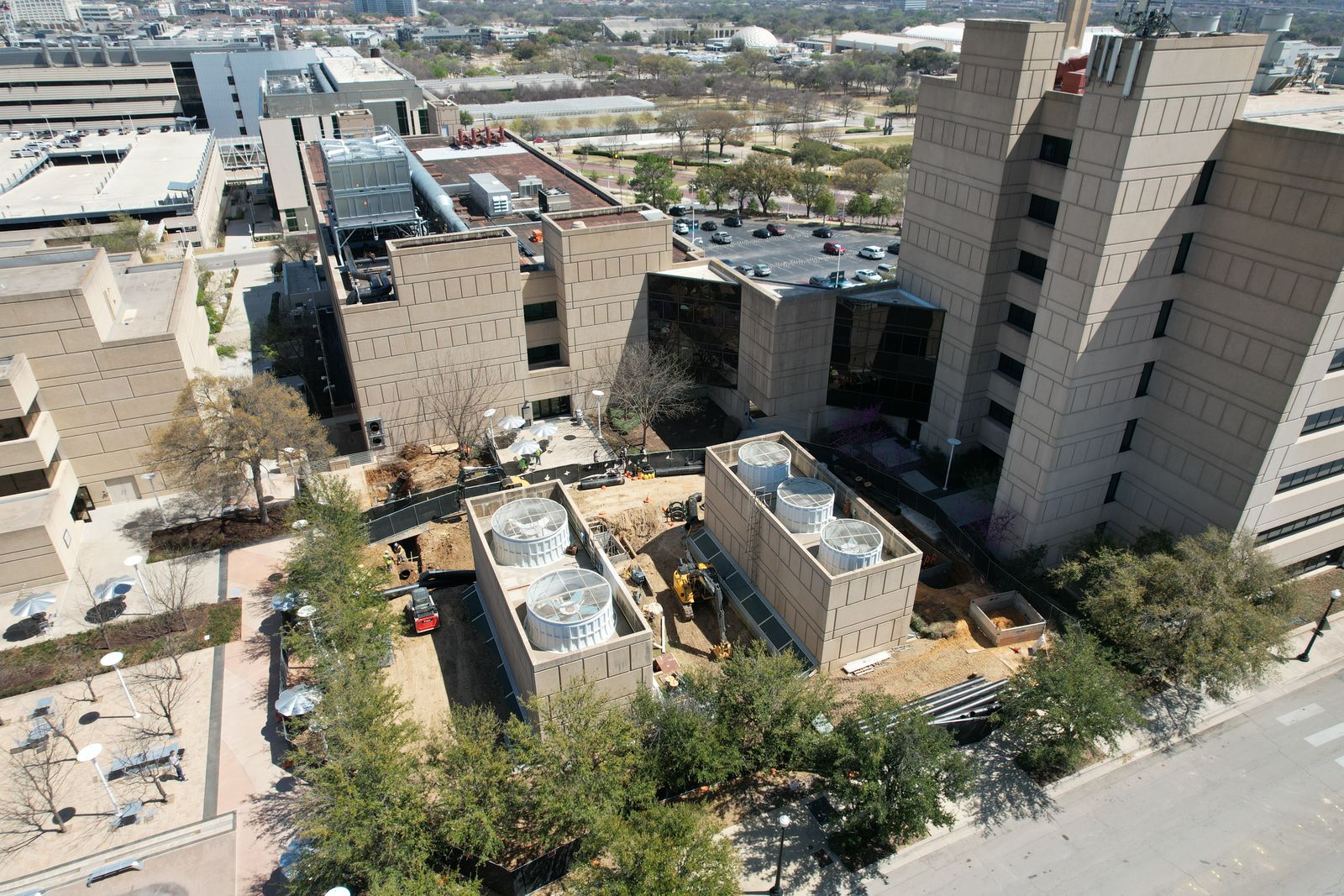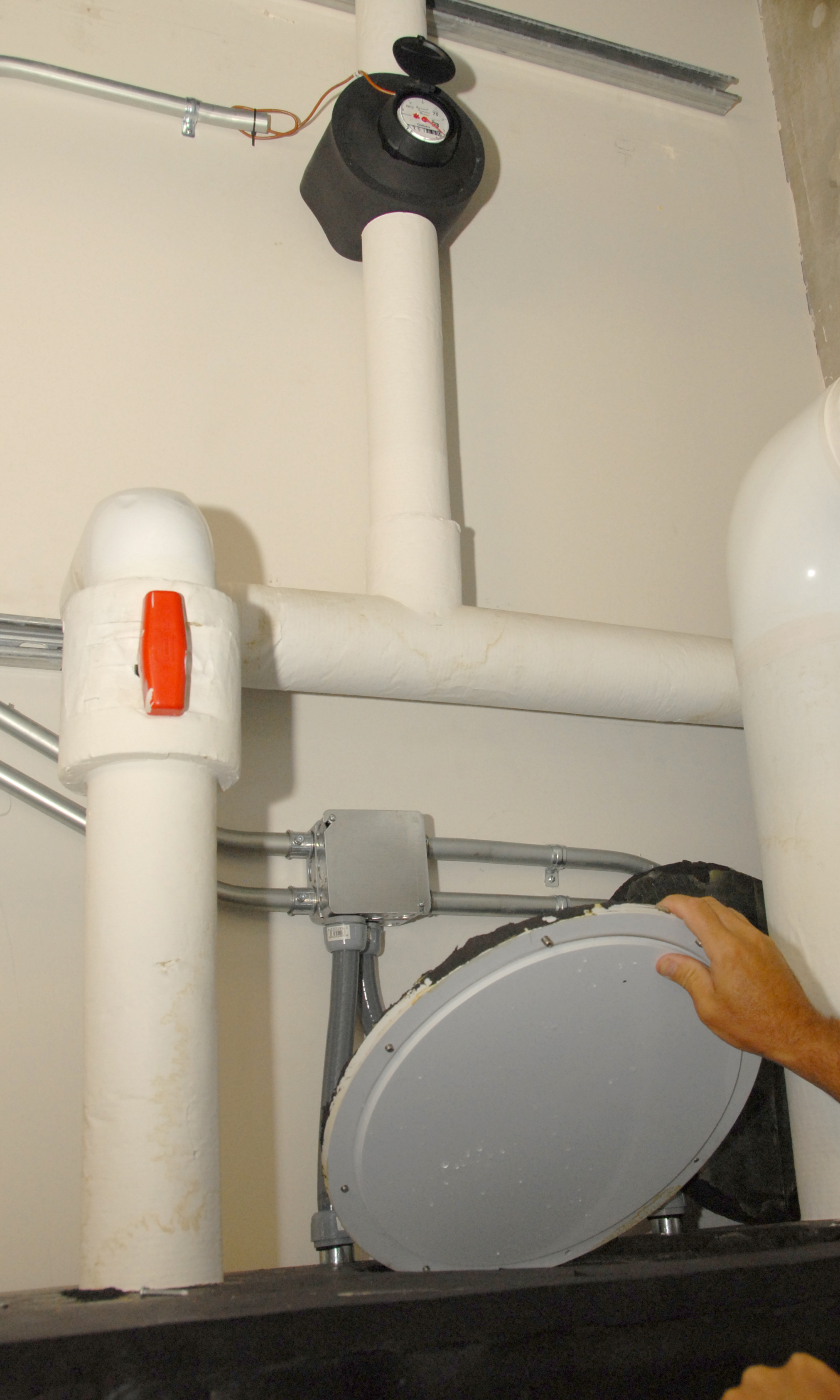Energy Efficiency & Water Conservation
Sustainability initiatives often start with energy and water, and HSC Facilities Management have been working to save our campus energy and water for decades. In fact, our energy savings is over $14 million! Click to learn more about our energy efficiency projects and how we conserve water.
Energy Efficiency
Energy Savings Performance Contract: Phase I & II
HSC began aggressive energy conservation efforts in 1999 when it completed a detailed energy audit for several of the buildings on campus. In 2001, a feasibility study was completed concerning the implementation of solar power on campus, but was concluded to not be a cost effective energy source at the time.
In 2001, HSC contracted with Tour Andover Controls (TAC), now Schneider Electric, to complete a two phase guaranteed energy conservation project. Phase I included:
- Lighting efficiency improvements
- Replacing two chillers
- Installing direct digital controls
- Domestic water conservation efforts
Phase I was a $3.2 million project financed through the Texas Public Finance Authority’s Master Lease Purchase Program. A measurement and verification plan was put in place along with training of university personnel. The energy and water reductions exceeded expectations and performance guarantee. According to EPA figures, the utility savings resulted in a reduction of CO2 emissions by approximately 25,425 tons, the equivalent of removing 5,085 cars from the road annually or planting 6,916 acres of trees.
In 2010, HSC began phase II of the Energy Savings Performance Contract with Schneider Electric. Phase II included:
- Motion sensor lights
- Window replacements
- Energy efficiency lighting in the buildings and parking garages
- Installing a computer power management system
- Mechanical upgrades to several building chillers
- Installation of a new water management package
Phase II was an $8.6 million guaranteed and self-funded investment. This phase was forecasted to save $835,000 annually, pay for itself in 10.3 years, and create $2.7 million in positive cash flow for the university. The environmental impact includes a reduction of over 2,400 tons of CO2 annually. The first two phases saved HSC $14.2 million in energy and operational costs.
 Energy Savings Performance Contract: Phase III
Energy Savings Performance Contract: Phase III
In 2022, HSC implemented a 20 year Energy Savings Performance Contract to modernize the cooling demand for the university’s research labs. This project will provide us with $424,912 annual avoided costs over the next 20 years. The project includes:
- LED lighting
- Colling tower replacement
- Installation of campus chilled water piping
Water Conservation
Our campus has grown significantly in the last two decades, and this growth causes increased demand on our resources. HSC is taking a proactive approach to efficiently using water on campus. See below for ways in which we are managing water used on campus.
 Low-Flow Fixtures
Low-Flow Fixtures
Low-flow fixtures use less water than standard fixtures. In fact, the Energy Policy Act (EPA) of 1992 mandated that toilets use no more than 1.6 gallons of water per flush. HSC installs low-flow fixtures throughout campus that conserve water even below the EPA standards. For example, the MET building has 0.6 gallon per flush (gpf) toilets and 0.28 gpf urinals, and the CBH has 1 gpf toilets and 0.5 gpf urinals.
In addition to our internal efforts to reduce water consumption, the Energy Savings Performance Contract (see Energy Efficiency), was estimated to reduce our water use by 6% or 1.9 million gallons.
Water Reuse
The CBH building on campus utilizes an HVAC mechanical system that incorporates four 60,000 cfm air handling units and a cooling capacity of 1750 tons. Until early 2012, the condensate from these units would drain into the sewer. Facilities Management installed an air handling unit (AHU) condensate catch tank and pumping system in order to reuse the water. The condensate from the air handling units is collected and then pumped in the cooling towers, thus lowering the need for city makeup water. The tank was brought online on May 5, 2012, and saves approximately 100,000 gallons per month.
Help the Campus Conserve Water
Water leaks can waste huge amounts of water over time. Please report any leaks or issues to Facilities Management at 817-735-2181.

Social media